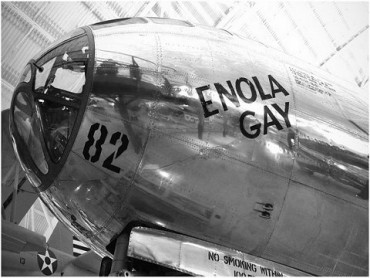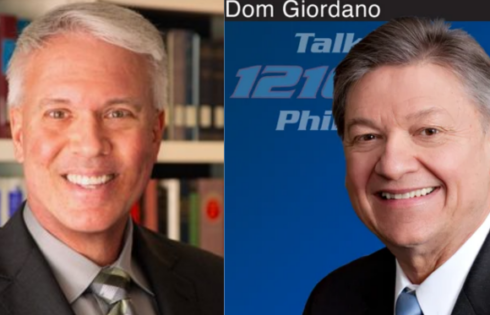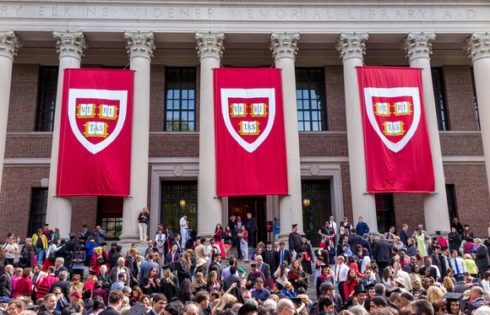
It happens every year, but especially so on certain milestone anniversaries: Certain academics and historians, usually with an axe to grind, trot out narratives that the atomic bombings of Hiroshima and Nagasaki on August 6 and August 9, 1945 respectively, were unjustified.
For example, American University’s Peter Kuznick says the idea that “hundreds of thousands of American and Japanese lives … would have been lost if the United States had invaded mainland Japan” is “sheer mythology.”
Professor Kuznick has teamed with filmmaker Oliver Stone to produce the Showtime series “The Untold History of the United States” (also available in book form). This alone should indicate from what perspective he’s coming at you.
Another professor considered to be a popular “revisionist” is Gar Alperovitz of the University of Maryland. I recall Alperovitz on numerous debate shows during the fiftieth anniversary of the bombings, and one of his main contentions is that President Truman wanted to use the atomic bomb to scare the Soviet Union more than anything else.
He also claims the US refused a “conditional” peace offer from Japan in the spring of 1945 — that they be permitted to keep the emperor (which the US actually did allow, after the fact) — so that the atomic bombs could be used.
Most recently, the University of California’s Gregg Herken provided “Five Myths About the Atomic Bomb” in the Washington Post. While much more even-handed overall than Kuznick and Alperovitz, Herken’s second “myth” is that the A-bomb saved upwards of 500,000 American lives.
He uses as proof of this claim the U.S. Joint War Plans Committee estimates of mid-June 1945 which predicted approximately “193,000 U.S. casualties, including 40,000 deaths.” But as one commenter pointed out to Professor Herken (with references), this was General MacArthur’s initial casualty estimate. General George Marshall believed there would be over 250,000 American casualties.
What’s more, the low figure completely ignores Japanese casualty figures in the event of an American land invasion, not to mention begs the question: If the US lost some 7,000 men in taking a rock like Iwo Jima, how do get such a low figure for an invasion of the main Japanese islands, whose population has been inculcated with the belief to fight to the death?
Recall the controversy over the Smithsonian’s Enola Gay exhibit twenty years ago. One of the main criticisms was that the estimated (American) casualty figures were ridiculously low. The museum ending up conceding that “reliable military estimates ranged from 260,000 casualties in that first phase to one million American casualties if forces had to fight their way across the Japanese islands.”
Representative Sam Johnson of Texas had reported that “They [the Smithsonian] were … (sending) info to the Japanese for them to look at the exhibit’s designs and make sure it was OK … I couldn’t believe it.”
There were even charges that the exhibit portrayed Japan was a victim of American racism during the war.
Indeed, the aforementioned Professor Peter Kuznick spoke for a group of historians regarding a later exhibit, saying “Many of us feel that the Museum is abdicating its responsibility and abandoning its educational role by failing even to inform the public that a longstanding scholarly controversy about the atomic bombings exists.”
No one interested in history should be afraid of dissenting interpretations or opinions; however, one should always be ready to challenge those who use history to advance an agenda.
Too often in academia today, no matter what, the United States is portrayed as the personification of malevolence … to the point where even the term “American” is considered “problematic” and displaying the American flag is “provocative.”
But that view is just as frivolous as blind patriotism. That, and it’s easy to appropriate 2015 knowledge for what we were preoccupied with seventy years prior.
In 1945, we were concerned with the bomb’s power and how it would hasten the end of the war. To fault us for not peering into the future to consider how a nuclear arms race would affect society is specious, at best.
I, for one, am glad we developed atomic power first … not Nazi Germany, Imperial Japan, or the Stalin-led USSR.
By the way, if you’re interested in “what if” scenarios regarding The Bomb, seek out some stories in the popular genre of alternate history. One of my favorite tales is “The Lucky Strike” by Kim Stanley Robinson. Though quite anti-atomic bombing, it’s a fascinating read.
Like The College Fix on Facebook / Follow us on Twitter
IMAGE: Gary Carpineta/Flickr







Please join the conversation about our stories on Facebook, Twitter, Instagram, Reddit, MeWe, Rumble, Gab, Minds and Gettr.